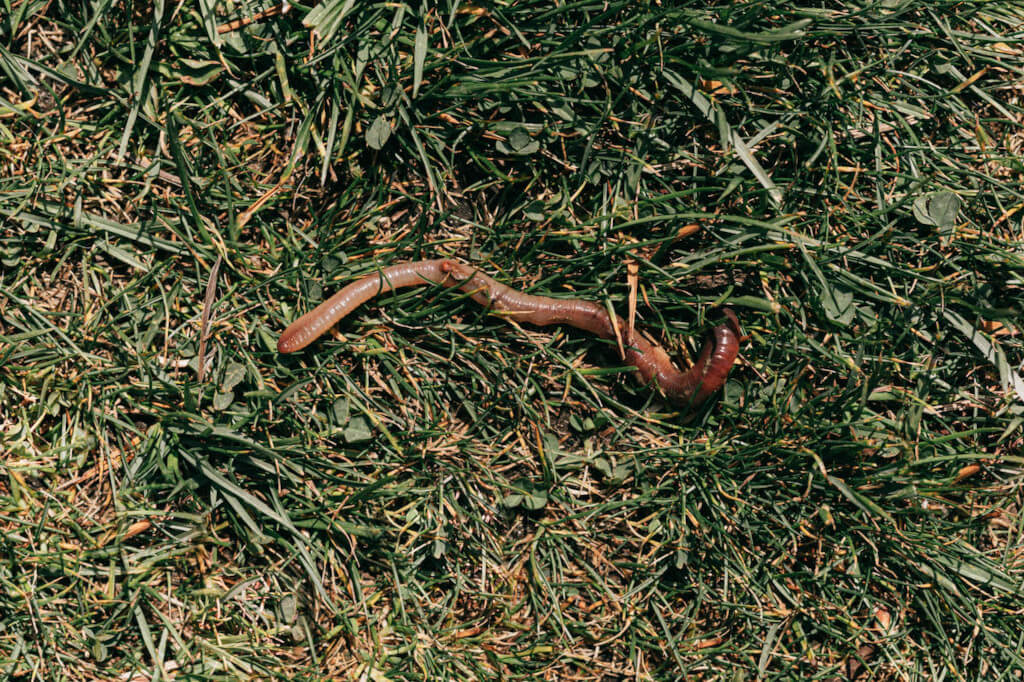Every farmer should make an effort to keep a healthy population of earthworms because of the significant role they play in enhancing the quality of the soil. Earthworms are remarkable creatures. Earthworms take in oxygen through their skin, which also excretes a lubricating fluid that enables them to move around in their burrows.
The phylum Annelida is home to the fragmented, long-bodied worms that are known as earthworms. There have been over 2,000 species discovered up to this point, and South Africa is home to more than 300 of those discovered species.
A fully grown earthworm will have developed a clitellum, which is characterized by a belt-like enlargement, as part of its reproductive system. It is unable to fertilize itself despite having both male and female reproductive organ systems within its structure.
The Act of Copulation Takes Place Overnight on the Top of the Soil
Before splitting apart, the worms mate by pressing their bodies against one another and exchanging sperm. In later stages, the clitellum will produce a mucus ring that will encircle the worm. As the worm makes its way out of the circle, it deposits eggs and sperm inside the ring as it does so.
After that, the ring will fall off, and it will turn into a cocoon for the developing eggs. Close to 18 earthworms can emerge from a single cocoon. The eggs hatch, revealing the small immature worms that have been inside them. They begin to develop their sexual organs in the first two or three months of their lives and grow to their full size in about a year.
According to their behavior and the environments in which they live, earthworms can be divided into three categories:
- Epigeic earthworms do not tunnel, but rather live on the surface of the ground, where they feed on decaying plant and animal matter. These earthworms are not considered to be true earthworms.
- Endogeic earthworms are responsible for the construction of horizontal tunnels in the upper 10–30 cm of soil. They do this by ingesting soil, which allows them to absorb nutrients from the organic matter present in the soil.
- Anecic earthworms spend the day burrowing far down into the soil profile and then come to the surface at night to eat and leave their droppings on the top layer of the soil.
How the Presence of Earthworms Benefits the Farmer
In their never-ending quest for food, earthworms create tunnels through the top layers of soil, which ultimately results in an improved soil structure. The tunnels themselves aid with water drainage and aeration of the soil, and the process of tunneling itself helps to loosen the soil. In addition to these important roles, earthworms also play the following roles:
They bring organic matter down into the soil, which is beneficial to the overall quality of the soil. In addition, the nutrients that are contained in the organic material that they consume are made available for use by the plants.
Castings from earthworms impart an ideal, crumbly consistency to the soil. According to Charné Myburgh, who works at the Grain Crops Institute of the Agricultural Research Council, research has shown that the droppings contain a higher concentration of nitrogen, potassium, phosphorous, magnesium, and calcium than is found in the soil that surrounds them.
According to Charné Myburgh, who works at the Grain Crops Institute of the Agricultural Research Council, research has shown that the droppings contain a higher concentration of nitrogen, potassium, phosphorous, magnesium, and calcium than is found in the soil that surrounds them.
Due to the fact that they consume both nematodes and pathogenic fungi in the soil along with organic matter, earthworms contribute to the reduction of both of these pest populations. On the contrary, the presence of earthworms in an area encourages the activity of microorganisms. According to Myburgh, “healthy soil microbiology is very important” because the microorganisms and enzymes in the soil regulate the cycling of nutrients.
Earthworm communities are influenced by the physical (temperature, humidity, oxygenation, and texture), and chemical (pH) characteristics of the soil, as well as the food supply. The ideal habitat consists of all of these factors combined.
Earthworm populations tend to be lower in disturbed soils, and these worms typically do not become active until there is sufficient moisture present. Earthworms are prey for a broad range of animals, such as rodents, birds, moles, reptiles, toads, snails, ants, and beetles, so the progress of an earthworm population can also be influenced by biological factors such as predators.
The best environment for earthworms to live in is soil that has been tilled, as this type of soil has a higher concentration of crop residues, which earthworms consume. Worms are harmed by tilling, and the benefits that they provide are significantly diminished.
In a nutshell, you should disturb the soil less if you want to see an increase in the number of earthworms. Other important considerations include the following:
Crop Rotation
Including legumes in crop rotation helps increase the number of earthworms in an area by providing a high-quality food source.
The pH of the Soil
A lower pH will result in a lower worm survival rate.
Irrigated Agriculture
Decent irrigation and drainage, especially in sandy and clayey soil types, along with the addition of plant nutrients and organic by-products help make conditions that are favorable for earthworms. Earthworms are beneficial to the environment. Earthworms are susceptible to the toxicity of a wide variety of chemicals, including aldicarb, carbaryl, carbofuran, and methomyl. A marker of the health of the soil is the number of earthworms, and a farmer who exercises conservation agriculture can use this indicator.
Bringing in Some Worms From the Soil

Make sure the soil in your farm or garden is healthy enough for earthworms to thrive before you try to introduce them. Soil that has been cultivated for a longer period of time is typically unsuitable because it has been compacted, has poor water flow and framework, and contains little organic matter.
Never put earthworms on the soil’s surface because they will either be eaten by prey or die from the heat of the sun if you do. Rather, you should do the following:
- Dig some holes with a shovel in each square meter of soil; add water and some organic compost to the holes; add about ten earthworms to each hole; then fill the holes with soil.
- The earthworms will require a steady supply of food, which can be provided in the form of an organic material cover layer. Utilize materials such as grass clippings, leaves, and compost.
- Do not anticipate any miraculous outcomes from the earthworms. Despite the fact that they are extremely beneficial to the soil, they are unable to instantly fix infertile soil or compensate for improper soil management.
Source: farmers weekly.com




